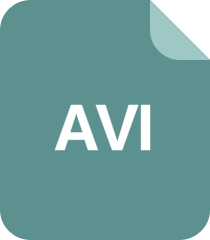
研究生导师信息管理系统的设计与实现
摘 要
随着我国计算机互联网产业,教育产业的飞速发展,社会对于教育资源的需求以及
教学管理软硬件的需求日益提高。尤其是对于研究生等更高学历的需求也越来越多。研
究生导师信息管理系统(Graduate tutor information management system),是大学为
适应现代的趋势,运用系统学理论方法,将与研究生老师有关的信息进行整合,分析,
规划,实施,调整而产生的。以方便研究生导师,研究生以及广大报考学子。
本系统采用 jsp 技术,JavaScript 技术,struts2 框架技术,并以 mysql 数据库为
数据存贮,B/S 结构为架构,tomcat 为服务器进行开发。系统目标是方便广大报考学子
对于导师信息的查询,在校学生对于在校信息的查询,以及研究生导师对于在校学生的
信息管理。它将导师与学生更好的联系了起来,在导师与学生之间架起了一座相互了解
的桥梁,更好的提高了信息的管理。
关键词:研究生导师信息管理系统;jsp 技术;B/S 模式;struts2 框架;MySQL 数据库

Design and Implementation of Information Management
System tutor
Abstract
With the rapid development of China's computer on the Internet industry, education
industry, the social demand management hardware and software requirements, and teaching
resources for education increasing. In particular, the demand for higher education graduate
students is also increasing. Tutor Information Management System (Graduate tutor
information management system), is the university to adapt to modern trends, the use of
systems theory approach, teachers and students information about the integration, analysis,
planning, implementation, adjustment arising. To facilitate the tutor, graduate students, and
the majority of applicants.
The system uses jsp technology, JavaScript technology, struts2 framework technology,
and data storage mysql database, B / S structure of architecture, tomcat server development.
System aims to facilitate the majority of students apply for tutor information queries, students
For inquiries and information about the school tutor for students of information management.
Tutors and students will better link up between instructors and students set up a bridge of
mutual understanding, to better improve the management of information.
Keywords: graduate student information management system; jsp technology; B / S
mode; struts2 framework; MySQL database

目 录
1 序 言..................................................................1
1.1 项目背景与意义.....................................................1
1.2 国内外研究现状 ....................................................1
1.3 项目目标预期.......................................................2
1.3.1 促进教育信息化 ...............................................2
1.3.2 方便广大报考学子 .............................................2
1.3.3 方便广大在校学生 .............................................3
1.3.4 方便导师 .....................................................3
1.3.5 方便管理员 ...................................................3
1.4 项目设计原则.......................................................3
1.4.1 实用性原则 ...................................................3
1.4.2 经济性原则 ...................................................3
1.4.3 扩充性原则 ...................................................4
1.4.4 可靠性原则 ...................................................4
1.4.5 健壮性原则 ...................................................4
1.4.6 可修改性原则 .................................................4
1.4.7 可修改性原则 .................................................4
1.4.8 程序便捷原则 .................................................5
1.4.9 可测试原则 ...................................................5
1.4.10 标准化原则 ..................................................5
1.4.11 先进原则 ....................................................5
1.5 软件编程规范.......................................................5
2 相关技术介绍............................................................6
2.1 三层框架的选择.....................................................6
2.1.1 表现层 .......................................................6
2.1.2 业务逻辑层 ...................................................6
2.1.3 数据访问层 ...................................................6
2.1.4 三层框架优点 .................................................7

2.1.5 三层框架缺点 .................................................7
2.1.6 三层框架与 MVC 架构的区别 .....................................8
2.2 程序语言,数据库以及框架的选择.....................................8
2.2.1java 语言 .....................................................8
2.2.2jsp 技术 ......................................................9
2.2.3mysql 数据库 ..................................................9
2.2.4struts2......................................................10
2.2.5javascript 技术 ..............................................10
2.3 B/S 模式和 c/s 模式................................................11
3 需求分析...............................................................12
3.1 系统需求分析简述..................................................13
3.2 需求分析..........................................................13
3.2.1 研究生导师信息管理系统需求目标 ..............................13
3.2.2 系统模块需求分析 ............................................14
3.2.3 系统安全需求分析 ............................................18
3.2.4 系统数据库需求分析 ..........................................19
4 总体设计...............................................................23
4.1 系统开发结构设计图: .............................................23
4.2 软件开发模型: ...................................................23
4.3 系统功能模块结构设计 .............................................24
4.4 系统数据库逻辑设计 ...............................................25
5 详细设计...............................................................28
5.1 主要界面设计......................................................28
5.1.1 系统主界面设计 ..............................................28
5.1.2 登陆界面设计 ................................................28
5.1.3 进入系统主界面 ..............................................28
5.2 业务逻辑层详细设计................................................28
5.2.1 用户登陆模块详细设计 ........................................28
5.2.2 访客功能详细设计 ............................................30
5.2.3 在校学生功能详细设计 ........................................31

5.2.4 导师功能详细设计 ............................................32
5.2.5 管理员详细设计 ..............................................33
5.3 数据库连接........................................................35
6 系统实现...............................................................36
6.1 系统主界面........................................................36
6.2 系统角色登陆界面..................................................37
6.3 系统角色角色进入界面..............................................37
7 软件测试...............................................................39
7.1 单元测试..........................................................39
7.2 系统测试..........................................................40
8 设计总结...............................................................41
参考文献.................................................................42
附录.....................................................................43
附录一 :外文原文 ....................................................43
附录二 :中文翻译 ....................................................48
致谢.....................................................................52



















